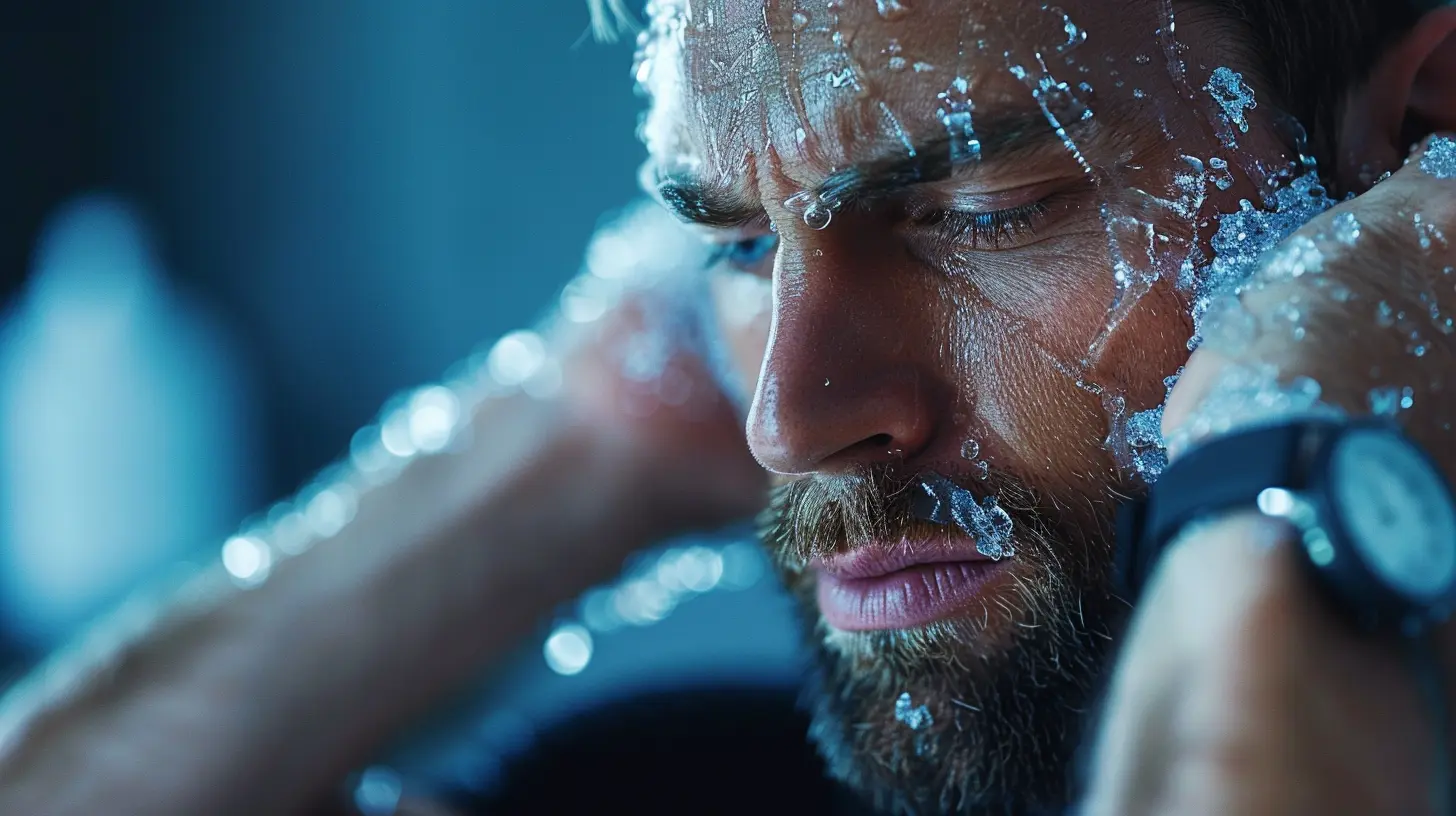How Cold Therapy Can Help You Stay Injury-Free
6 August 2025
If you’re serious about your training—whether that’s hitting the gym, grinding on the field, or logging those early morning miles—then you’ve probably heard someone rave about cold therapy. Maybe you've seen athletes soaking in ice baths that look… frankly painful. Or you’ve caught glimpses of folks on social media stepping into cryo chambers like they're walking into a scene from a sci-fi movie.
So what's the buzz really about? Is cold therapy the secret sauce to staying injury-free?
Well, buckle up, because we’re going full deep-dive here. We’ll unpack exactly how cold therapy works, why it’s more than just a chilly fad, and how you can actually use it to keep your body stronger, fresher, and—most importantly—injury-free.
What Is Cold Therapy, Anyway?
Let’s get the basics down first.Cold therapy, also known as cryotherapy, is exactly what it sounds like—using cold temperatures to treat injuries or improve recovery. It comes in a few different forms:
- Ice packs or frozen gel wraps
- Ice baths (immersion in cold water, usually 50-59°F)
- Cryotherapy chambers (extreme cold, dry air for short bursts)
- Cold compression devices
Unlike heat therapy, which relaxes muscles and boosts blood flow, cold therapy does the opposite—it numbs pain, reduces swelling, and slows down inflammation. Sounds like something your body could use after a brutal workout, right?
Why Athletes Swear by Cold Therapy
Ever watched a football player sprint off the field after a huge tackle, only to reappear a few plays later covered in ice packs? That’s not just for show.Cold therapy tackles recovery head-on. When used consistently, it helps your body bounce back faster and keeps nagging injuries from turning into major setbacks.
So, how does it pull this off?
- Reduces inflammation: Cold constricts blood vessels, cutting down on the swelling that typically follows intense exercise or injury.
- Numbs sore spots: Ice literally dulls your pain sensors, giving some immediate relief after a tough session.
- Slows cellular damage: It helps reduce tissue breakdown, especially after high-impact activities.
- Flushes out toxins: That cold-brain-freeze sensation? It's part of the process of forcing old blood out and letting new, nutrient-rich blood flow back in after warming up again.
It’s basically a reset button for your muscles.
The Science Behind Cold Therapy and Injury Prevention
Let’s dig a little deeper into the science. Why does making yourself temporarily uncomfortable actually make your body better?Here’s the deal:
1. Cold Reduces Microtraumas
Every time you work out—especially if you're doing strength training or high-impact sports—you’re creating microtears in your muscles. That’s a good thing because it leads to growth. But it also comes with soreness and inflammation.Cold therapy helps mitigate that microtrauma before it snowballs into something worse. Think of it as putting out sparks before they start a fire.
2. Enhances Recovery Time
Shorter recovery isn’t about cutting corners—it’s about keeping you consistently active. If your muscles are constantly sore, tight, or inflamed, your form suffers. And bad form is a one-way ticket to injury.Integrating cold therapy post-workout speeds up muscle repair so you can move better, sooner.
3. Reduces Delayed Onset Muscle Soreness (DOMS)
If you've ever woken up two days after leg day and waddled around like a penguin, you’ve met DOMS. It’s your body's way of adapting—but it sure isn’t fun.Cold therapy has been shown to lessen the severity of DOMS, which means you can keep your training schedule on track without skipping workouts—or limping through them.
4. Supports Joint Health
Injuries often stem from stiff or overworked joints. Cold therapy doesn’t just target muscles—it also works on joints, tendons, and ligaments, keeping them flexible and pain-free.
How Cold Therapy Keeps You Consistently Injury-Free
Let’s bring this home. The whole point here isn't just about recovery—it's about staying injury-free.Here’s how cold therapy helps you protect your body in the long run:
A. Keeps Inflammation Under Control
Chronic inflammation is a one-way road to overuse injuries. Cold therapy keeps your inflammation levels in check, especially when used routinely after training sessions or games.Less inflammation = lower risk of long-term tissue damage.
B. Promotes Mental Toughness
No joke—stepping into an ice bath or cryo chamber takes guts. It builds your mental muscle, which has a crazy domino effect: you push harder in your workouts, recover quicker, and stay mentally resilient when setbacks pop up.C. Encourages Better Sleep (Seriously)
Believe it or not, using cold therapy after evening workouts can help you sleep like a rock. Better sleep = better recovery. It’s all connected.D. Acts as a Proactive Defense
Rather than waiting for injuries to happen and reacting, cold therapy puts you in proactive mode. It’s one of the best recovery tools out there to stay ahead of tweaks, strains, and flare-ups before they become major problems.How to Incorporate Cold Therapy into Your Routine
Alright, now that we’ve hyped it up, how do you actually make cold therapy work for you?Here’s a breakdown:
1. Ice Baths Post-Workout (10-15 Minutes)
If you’re doing high-intensity or long-duration training (think CrossFit, running, or HIIT), a 10-15 minute ice bath can work wonders. Just make sure you’re not doing it right before strength training sessions—you don’t want to dull your muscle-building response too much.2. Cryotherapy Sessions (2-3 Times a Week)
Got access to a cryo chamber? Lucky you. Just 2-3 minutes inside can give you a full-body refresh. Use this after particularly intense sessions or competition days.3. Spot Treatments with Ice Packs (As Needed)
Tweaked a knee mid-workout? Or did your shoulder act up again? Slap on an ice pack for 15-20 minutes. Quick, simple, and targeted relief.4. Cold Showers (Daily Routine)
Don’t have time for a full ice bath? A cold shower still brings benefits. Alternate between hot and cold water for a few minutes to stimulate circulation and recovery.Common Myths About Cold Therapy (Busted)
Let’s get real—there’s a lot of noise out there. Let’s clear up some misconceptions.“It’s Just for Pro Athletes”
Nope. Cold therapy isn’t reserved for million-dollar contracts. Whether you’re a weekend warrior or training for your first marathon, your body deserves top-tier recovery, too.“Cold Therapy Will Stop My Gains”
This one floats around a lot. Yes, extreme cold right after strength training may blunt the muscle-building process slightly, but it doesn’t kill your gains entirely. The trick is timing—use cold therapy when your focus is recovery, not hypertrophy.“Ice Baths Are Dangerous”
Only if you overdo it or have medical conditions. As long as you stay smart—limit the time, don’t go too cold, and warm up properly afterwards—ice baths are totally safe and beneficial.Bonus Tips to Maximize Your Recovery
Cold therapy is a beast on its own, but pair it with these habits and you’re bulletproofing your body:- Stay hydrated: Muscles love water. Period.
- Prioritize sleep: Recovery is built in the bedroom.
- Eat like an athlete: Focus on anti-inflammatory foods—berries, leafy greens, and omega-3s are your friends.
- Mobility work: Cold therapy plus stretching keeps you limber and injury-free.
- Listen to your body: If something feels off, address it early. Cold therapy is a tool, not a cure-all.
The Cold, Hard Truth: It Works
In the end, cold therapy isn’t some trendy hack—it’s a time-tested method used by athletes, trainers, and recovery pros everywhere to stay strong, avoid injury, and perform at their best.Yes, it’s uncomfortable. Yes, you’ll probably curse your way through your first few ice baths.
But the moment you get back to the grind faster, pain-free and feeling fresh, you’ll realize why cold therapy is worth every shiver.
So if you’re tired of dealing with constant soreness, battling recurring injuries, or just want to level up your recovery game—it’s time to get chill.
Literally.
all images in this post were generated using AI tools
Category:
Injury PreventionAuthor:

Umberto Flores
Discussion
rate this article
1 comments
Caelestis Perez
Embracing cold therapy not only aids recovery but strengthens your resilience! Stay consistent, listen to your body, and keep pushing forward. Your dedication will keep you injury-free and unstoppable on the field!
September 13, 2025 at 11:43 AM

Umberto Flores
Thank you for your insightful comment! Consistency and listening to our bodies are indeed key to maximizing the benefits of cold therapy for injury prevention and recovery. Keep pushing forward!


